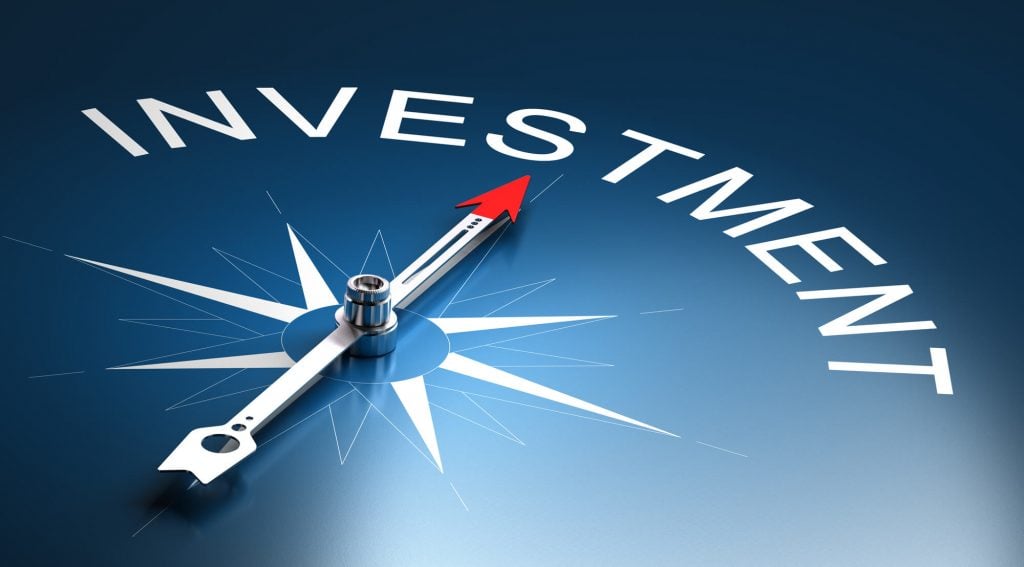
Investors use several different methods to evaluate a company’s worth. Sometimes, negative information may be a positive sign that may encourage investment. Declines in stock prices, revenue, growth, or dividends aren’t always, in and of themselves, deal-killers when it comes to investment decisions. They may indicate opportunities.
That is very much not the case with negative stockholders’ equity.
When a company has a negative equity balance sheet, something is seriously wrong. It may be temporary; it may be fixable. But whatever it is, it’s bad.
In many cases, it’s a sign that the company is on the highway to bankruptcy, and most of the off-ramps are closed. If the company’s going to emerge on the other side, they’re going to have to take the long way to find an open ramp. By the time they do, they may be out of gas.
But as dire as a negative equity balance sheet appears, does it always indicate an investment to be avoided? Or is there some kind of silver lining that can save it?

What Is Negative Stockholder Equity?
Shareholders’ equity is computed using a very simple formula:
Total Assets – Total Liabilities
That’s it. The overall value of the assets a company holds, minus the amount it owes in debt, equals shareholder equity.
Why is it called “shareholder equity” or “stockholder equity”? Because it represents what a company would pay back to its shareholders if, theoretically, it sold off all its assets and paid off all its debts. The leftover balance would be returned to those who held investments in the company. Stockholders would shake hands, wish the now-liquidated company well, and walk away with some cash.
Unless, of course, the amount of liability was more than the value of the assets. That’snegative stockholders’ equity.
A company with a negative equity balance sheet owes more than it has on hand. The valuation of its assets isn’t enough to pay back all its debt. So the shareholders’ equity is expressed as a negative number.
On paper, you might interpret that as how much the stockholders owe, as opposed to how much they’d earn if the equity were positive. But practically, that’s not the case. With negative owners’ equity, stockholders are only liable for the amount they invest in the business. They just wouldn’t get any returns if the company liquidated.
When a company has a negative equity balance sheet, investors should consider it a very serious warning. The company is probably not doing too well. Potential investors need to do a very thorough examination into the company before they buy a stake in them.
How Can Equity Be Negative?
What kinds of factors play into negative stockholders’ equity? It can be a few things:
Extended Periods of Loss
When a company turns a profit, it might use some of its net income to pay dividends back to its shareholders. They may then use the leftover income to reinvest in the business, fund growth opportunities, or pay down company debt. This leftover income is called “retained earnings”: how much profit they’re setting aside (retaining) to keep operations intact.
But when a company experiences net loss, its accountants record it as a negative number against their retained earnings. They then deduct it from the recorded retained earnings from the last period (year or quarter).
When retained earnings go down, what a company earns from revenue and stockholder funds can’t cover expenses. That may be a sign that the business has been experiencing losses for an extended time.
Heavy Debt
When a company can’t (or won’t) release stock to raise capital, it might borrow money to cover its losses. That’s to prevent the balance sheet’s “liability” figure from looking too high. It also preserves stockholders’ percentage ownership.
Funding a company with borrowed money might make life easier for organization leaders, but the shareholders’ equity takes the hit. The numbers of shares they own remain intact, but their value goes down. If losses keep accumulating, the company may be headed into an over-leveraged position in which they’re forced to borrow more and more. It’s not hard to see how that can be big trouble.
High Cash Dividend Payouts
At the end of a company’s fiscal period — quarterly or annually — leaders may decide to issue dividends to shareholders from its retained earnings. This can be done in the form of additional shares or straight cash.
If the company chooses to pay out dividends by issuing more stock shares, the actual price of those shares may go down a bit. Shareholders’ equity wouldn’t be affected. The drop in retained earnings is balanced with a rise in paid-in capital (i.e., the funds the company gets from their investors for shares). So shareholders’ equity is entirely unaffected.
But when dividends are paid out in cash, shareholders’ equity declines. The company’s merely distributing money from their retained earnings. That money’s leaving the company for good. There’s nothing on the balance sheet to make up for that loss, like there is with stock dividends. Therefore, shareholders’ equity goes down.
Company Repurchase of Common Stock
Occasionally companies buy back shares from their stakeholders. These repurchased shares are known as “treasury stock.” According to Zacks, they may do this “to try to boost a sagging stock price, to thwart a hostile takeover or to gather up shares to distribute to employees.”
That means shareholders get a little money back, but fewer shares are available for others to invest in. As with cash dividends, companies buying treasury stock are essentially letting money flow out of their retained earnings. That decreases shareholders’ equity.
Amortization of Intangibles
A company’s assets include more than physical product. They may also count “intangible” assets that add value to the company. Intangible assets include non-physical items like intellectual property, trademarks, patents, worker expertise — things that exist only on paper or in the mind.
These intangible assets, in the minds of accountants, have financial value. They represent a capital expense. Instead of assessing the cost of an intangible asset as a one-time purchase, an accountant may spread out the capital expenditure over several years to ease tax burdens. This is called “amortization.”
When an accountant amortizes an intangible asset over time, its value goes down year by year. It reduces net income, which reduces retained earnings — which in turn reduces stockholders’ equity.

What Can Happen As a Result of Negative Stockholder Equity
Although a negative equity balance sheet isn’t always a portent of impending doom for a company, it sure doesn’t help. Extended periods of negative shareholders’ equity may have dire consequences.
Company Devaluation
The overall worth of the company — or at least public opinion of that worth — may decrease. This can result in dramatic reductions in share prices, dividends, possibly even customers.
Credit Ramifications
Negative stockholder equity may harm a company’s credit rating. Banks consider the company a bigger risk. This, in turn, could make it harder for the company to get loans, or result in interest rate hikes on the loans they already have. They may also face reduction or total elimination of their credit period (how long they have to pay off debt).
Layoffs
If equity goes down, values go down on the balance sheet. To compensate for losses or streamline operations, the company may have to lay off several of its workers. Layoffs never bode well for a company’s short-term health.
Insolvency
If stockholder equity remains negative for a long time, it faces a significant risk of being unable to pay any of its debts. The business becomes insolvent and is very likely headed for bankruptcy.
How to Value a Company With Negative Equity
Nobody wants to tie up their investments with a company that’s in trouble. When negative stockholder equity exists, it’s difficult to analyze what a certain business is worth. You can’t use earnings as a reference point because there aren’t any.
But does negative equity mean that company’s value is completely non-existent? Not always.
No doubt, the company’s in some kind of trouble. To get out of that bind, a lot of breaks need to go the company’s way. That’s to say it’s unlikely, uncertain, and extremely hard — but there’s a chance.
Part of valuation involves estimating future growth. When earnings and equity are diminished, that’s hard to do. To arrive at a valuation of a company with a negative equity balance sheet, investors may consider some of these questions:
Could This Be a Short-Term Problem?
Any number of factors can cause a sudden drop in earnings or equity. But they may not last.
For example, say a company is hit with a giant class-action lawsuit, which they eventually settle. All the legal costs involved in the lawsuit count as hits to retained earnings. If they’re substantial enough, they might drive shareholder equity down. But the company learns from this debacle, institutes some new controls, readjusts, and eventually returns to profitability.
So, the damage, while significant, was not fatal. Rather, it was tightly linked to a single event. To assess the company’s value, one may decide to evaluate its earnings before the event happened and make projections from those.
Are the Company’s Fundamentals Still Strong?
Between 2014 and 2016, one company went on a share buy-back spree. They spent $20.5 billion on treasury stocks. Their money basically went out the door, dropping their retained earnings, and sending shareholder equity into the red. The business world was concerned. They saw the company coping with a few years of downturn in a questionable way. Investors were extremely nervous.
The company we’re talking about? McDonald’s.
While McDonald’s may not be as dominant as they were 40 or 50 years ago, they’re still around. They still lead all fast-food chains in annual revenue, by a lot. Their share prices flatlined for a while, but they’re higher than ever today. That’s because they had a lot of fundamentals in place to carry them out of buyback-generated danger.
Is the Trouble Limited to This One Company — Or Is it Affecting the Whole Industry?
A recession can hurt the worldwide economy or just certain sectors at a time. There have been individual recessions in the technology or real estate sectors in recent memory. That can drag down the shareholders’ equity at several similar companies, not just one.
If that’s the case, chances are a little better that the company will get better when the industry picks back up. All businesses face cyclical periods of growth and decline. When the recovery happens, the businesses with strong business models will rebound.
Without question, a negative equity balance sheet means a business needs to make serious adjustments. It should not be taken lightly by anyone, including the investor. Nobody would blame you for staying away from it.
But there’s a chance a business experiencing negative stakeholder equity will pay off — eventually — for those who jump in at the right time. Be extraordinarily cautious, to a fault. And then, be extremely patient.

Gorilla Trades: Smart Investments Made Simple
Gorilla Trades helps investors weather downtrends. With our reliable method for finding stocks, we help your portfolio maintain across-the-board health. Find out more with a free trial.
